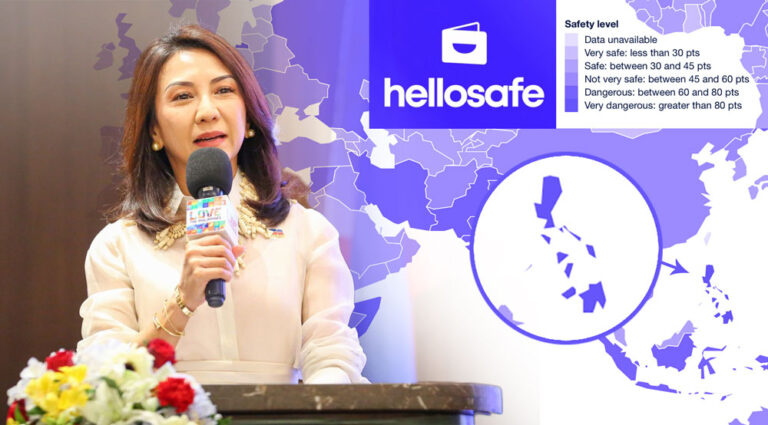SIARGAO ISLAND – Siargao boasts spectacular seascape and landscape, a haven for nature-lovers who are tired of chaotic urban life and want to experience a laid-back island vibe. Branded as the country’s surfing capital, it offers unparalleled waves making it a go-to destination for surfers from across the globe.
The island’s tourism industry has unprecedentedly skyrocketed in popularity in recent years. But while it’s taking off, tourism stakeholders on cloud nine need to take part in nature conservation, so they won’t be drowned by a wave of insurmountable environmental problems being experienced by Boracay and other tourism destinations.
Hoping to drive their place away from the unsustainable tourism path, tour guides and boat operators in the island have responded to this call.

Just recently, they temporarily left their jobs for two days and attended “Be Frontliners Improving Tourism” (Be FIT), a youth-led training on sustainable tourism principles and practices in the surfing town of General Luna in Siargao Island. Be FIT is one of the projects supported by the US Department of State’s Young Southeast Asian Leaders Initiative program in the Philippines.
With topics on local tourism and environment situationer, community empowerment, eco-friendly guidelines on diving and snorkelling, and tour guiding basics, the training empowered these tourism frontliners to educate the tourists about the need to preserve Siargao Island’s exceptional marine environment.
“Our frontliners play an important role in sustainable tourism. They are the tourists’ source of information. When guided accordingly, tourists can enjoy nature while snorkeling, and minimize their impact to the coral reefs,” said Be FIT’s co-implementer Bryan Madera.
Among the participants was tour operator and guide Adrian Camingue and being on the front lines, he said, gives them the power to make or break the future of their community and their very own tourist destination upon which they depend for a living.
“As a tour guide, it’s important for us to be knowledgeable in protecting the marine environment and conserving the marine wildlife, because it’s all of us who will eventually benefit from their services,” he said.
Camingue believes that “by protecting our marine environment, we will be able to sustain not just our tourism but also our fisheries production.”
Of the 278,914-hectare coverage of the Siargao Island Protected Landscape and Seascape (SIPLAS), some 216,156 hectares of which comprise of marine ecosystems teeming with vibrant coral reefs, a vital fish breeding ground providing people with food. Amazingly, SIPLAS is home to 106 species of fish and three species of marine turtles, among other threatened marine fauna.
“If we want a steady stream of tourists, we have to maintain our natural resources,” said Franklyn Arcadio, development management officer for SIPLAS Protected Area Supervising Unit. “Sure, white beaches and surfing-perfect waves attract tourists,” added Arcadio, “but they also want to see a healthy coral reef ecosystem that all the more draws them.”
To keep the coral reefs undisturbed by unabated tourism activities, marine conservationist Madera said proactive actions have to be done. “We need to promote proactive actions in protecting our coral reefs from harmful tourism impacts, such as coral breakage from standing and kicking, as it takes time for the coral reefs to recover,” he said.
Madera went on to say that “tourists and guides should avoid any contact with the corals, and boat operators should avoid dropping anchors on the reef and use mooring buoys instead.”
“We should also check the ingredients of our sunblock to make sure that it doesn’t contain oxybenzone, butylparaben, octinoxate, and 4-methylbenzylidene-camphor, which can cause coral bleaching as they are toxic to symbiotic algae that live within the coral,” he added.
There is no surefire way to avoid the potentially harmful impacts of visitation to a natural area than to tell visitors to respect the place by observing tour guidelines. It should be a norm now and in the coming years as mass tourism continues to boom in the entire Siargao island, particularly in General Luna town which enjoys being the island’s center of tourism hubbub.
Arcely Gallentes, General Luna’s tourism officer-designate, said the town dubbed as Asia’s surfing mecca has started to see an upsurge in tourism arrivals in 2011. “For 2016, we’ve had over 40,000 tourists, and the number incredibly doubled last year,” she said.
Gallentes, however, said the influx of tourists driving economic development in the island comes with a price. Recent coastal cleanup activities in General Luna showed it grapples with its growing plastic trash problem. Left unsolved, it would specifically pose a threat to the town’s over 5,500-hectare marine sanctuary.
The International Coral Reef Initiative (ICRI), which has declared 2018 the International Year of the Reef, said litter generated by tourist and leisure industries inland “can damage coral reefs when transported by rivers into coastal waters.”
In fact, coral reefs around the world are under siege from plastic debris. They starve corals of vital oxygen and light, and releases toxins enabling bacteria and viruses to invade, according to the United Nations Environmental Program (UNEP).
“In a survey of 159 coral reefs in the Asia–Pacific region, published in Science this year, researchers estimate there to be a staggering 11.1 billion plastic items entangled in the corals. This number is projected to increase by a further 40 percent in just the next 7 years,” the UNEP noted.
Just this month, the provincial government of Surigao del Norte, which has jurisdiction over Siargao’s 9 towns, said it is now taking steps to improve the island’s waste management system. In a GMA News Online article, Surigao del Norte First District Representative Bingo Matugas said they will be setting up a P290-million centralized solid waste management system which will be completed within the year.
“Under the said project, all towns will be given dump trucks for garbage collection. Garbage collected will be dumped in a waste-to-energy facility to be built by a Korean environmental company,” Matugas was quoted as saying.
As the waste facility is underway, non-profit Siargao Environmental Awareness (SEA) Movement said it will continue its advocacy of promoting a trash-free island, most especially to the traveling community.
“The persistent plastic problem in Siargao Island pushes us to keep moving, keep empowering the community. Our goal is to educate both locals and non-locals about the environmental impacts of improper waste disposal. Eventually, we encourage them to join us in doing regular cleanup activities during weekends,” said SEA Movement vice president Jolan Saavedra.
Corazon Lim, also a tour operator and guide, said sustainability in the tourism industry won’t happen without the tourism frontliners themselves taking concrete, practical actions to address tourism’s inherent problem as pressing as poor waste management.
“Personally, I always bring my own trash back to the boat and ask my guests to do the same. Although it’s common sense, you still need to remind them not to throw their trash into the sea,” Lim said. “If you talk like that then prove it to them, stick to what you’ve said and they will eventually follow.”
True enough that tourism brings myriad of opportunities to host communities, but it also presents numerous challenges that if left unresolved may cause in the long run an irreversible damage to the natural environment. As for Siargao’s tour guides and boat operators, they are now ready to take on these challenges head-on. (Keith Anthony Fabro)
Like Us on Facebook: https://www.facebook.com/mindanaoexaminer
Follow Us on Twitter: https://twitter.com/MindanaoExamine
Read Our News on: http://www.mindanaoexaminer.com/
http://mindanaoexaminernewspaper.blogspot.com/
Share Our News
Digital Archives: http://issuu.com/mindanaoexaminernewspaper



